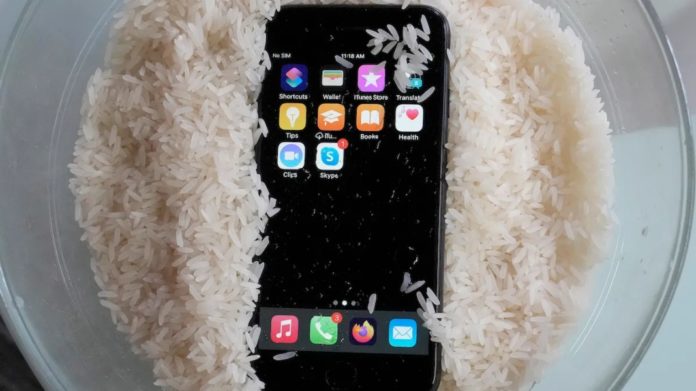As the rainy season sets in, the risk of dropping your phone in a puddle becomes all too real. While modern smartphones boast water-resistant features, they’re not entirely immune to water damage. Instead of reaching for the rice, consider these alternative methods to dry out your device and potentially save yourself a hefty repair bill or the need for a new phone.
While these methods aren’t foolproof, they offer a glimmer of hope in reviving a waterlogged phone. Anecdotal evidence suggests their effectiveness, although scientific studies on the subject remain scarce. A 2014 study by Gazelle highlighted the influence of phone make and model on the likelihood of recovery, with Android phones often faring better than iPhones.
Act Quickly
The first step in avoiding water damage is swift action. Remove your phone from the water immediately to minimize exposure, then follow these steps to increase your chances of revival.
Both Apple and Samsung provide guidance for dealing with water-damaged phones. For iPhones, Apple advises drying the device with a lint-free cloth, tapping gently to remove excess water, and allowing it to air dry for at least five hours. Samsung recommends a similar approach, emphasizing the importance of ventilation and cautioning against the use of heating sources.
Silica Gel Beads

Silica gel beads offer an effective moisture-absorbing solution. Place your phone in a sealed container filled with silica gel beads and allow it to dry for approximately 72 hours. This method provides an alternative to traditional rice and has been endorsed by experts for its efficacy.
Other ways:
- Cat litter: Some cat litters are made of silica gel, which can absorb moisture effectively. Put your phone in a sealed container with clean, unused cat litter. Ensure the phone doesn’t come into direct contact with the litter.
- Desiccant Packs: Similar to silica gel packs, you can use other desiccants like calcium chloride packs. These are often used for reducing moisture in small spaces. Place your phone in a sealed container with these packs.
- Use a Hair Dryer: Set your hair dryer to its lowest, coolest setting and gently blow air over your phone. Keep the dryer at least a foot away from the device to avoid overheating. This method can help evaporate moisture, but be cautious not to expose your phone to heat for too long.
- Air Circulation: Place your phone in an area with good airflow, such as near a fan or an open window (if humidity is low). This can help speed up the natural evaporation process.
- Vacuum: You can use a vacuum cleaner with a small nozzle attachment to try to draw out any moisture from the phone’s ports and crevices. Be gentle to avoid damaging any delicate components.
- Grains and oats: If you prefer not to use rice, you can use other uncooked grains like oats or couscous. These work similarly to rice in absorbing moisture.
Household Alternatives
If silica gel beads aren’t readily available, consider household items such as couscous or instant rice as drying agents. While not as effective as silica gel, these options can still aid in moisture removal. However, avoid substances like conventional cat litter or oats, as they may leave behind debris that could further damage your device.

Regardless of the method chosen, exercise caution and patience. Rushing the drying process or resorting to heat sources can further damage your phone. If your phone fails to revive after attempted drying, seek professional assistance to avoid further complications.
While dropping your phone in water can be a distressing experience, it’s not necessarily the end of the road. By acting swiftly and employing effective drying methods, you may be able to breathe new life into your waterlogged device. So, skip the rice and explore these alternative approaches to save your wet iPhone or Android.
Stay tuned to Brandsynario for more.







































